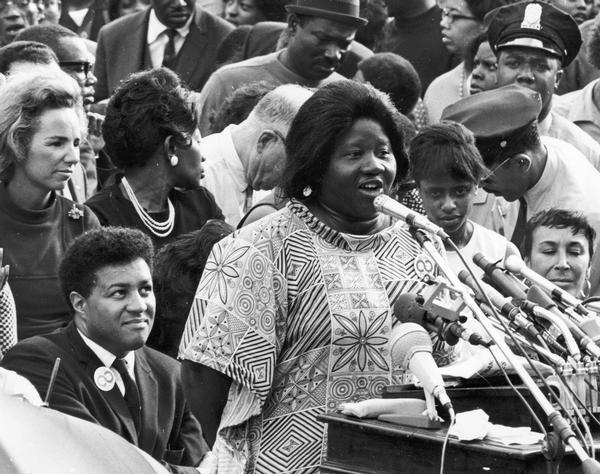This Day In History: April 10th
Johnnie Tillmon-Blackston grew up in a family of sharecroppers but managed to become a leading welfare activist and reformer. Tillmon-Blackston was born on April 10, 1926, in the town of Scott, Arkansas.
Tillmon-Blackston married her first husband, but she left him behind and decided to travel to California in search of a better life. She packed up her children, relocated and took a job working in a Compton laundry mat before having to become a recipient of government-sponsored assistance.
After unpleasant encounters with the system, she soon recognized how poorly welfare recipients were treated and harassed by caseworkers. This was a period when inspectors would invade a recipient’s privacy by rummaging through refrigerators, asking inappropriate questions, and conducting random raids to make sure the women receiving aid had no men present in the home.
These actions were viewed offensively by Tillmon-Blackston and she knew that a change was needed. She began to send anonymous letters to her neighbors in the Watts housing project asking for all welfare recipients to attend a protest meeting and she was met with a welcoming response. She used the people around her in the housing project to establish one of the first grassroots organizations for mothers participating in welfare programs. Her organization was called ANC (Aid to Needy Children) Mothers Anonymous and began operating in 1963.
Once the women were organized, they connected with other state groups and that led to the creation of the National Welfare Rights Organization (NWRO). Tillmon-Blackston became an emerging leader of the movement and served as the chairperson of the NWRO. The organization created successful campaigns for improvements and brought much attention to the welfare debate. The mothers were also able to align themselves with the Feminist Movement for additional support. She led the organization until funding issues caused its demise nearly a decade after its creation.
Tillmon-Blackston moved back to California, where she found work as a legislative aid and worked on various committees that centered around welfare. Her resistance to inadequate treatment and regulation helped to set federal standards that made states improve the lives of poorer residents. She remained a dedicated figure in welfare rights activism until her death in 1995.








